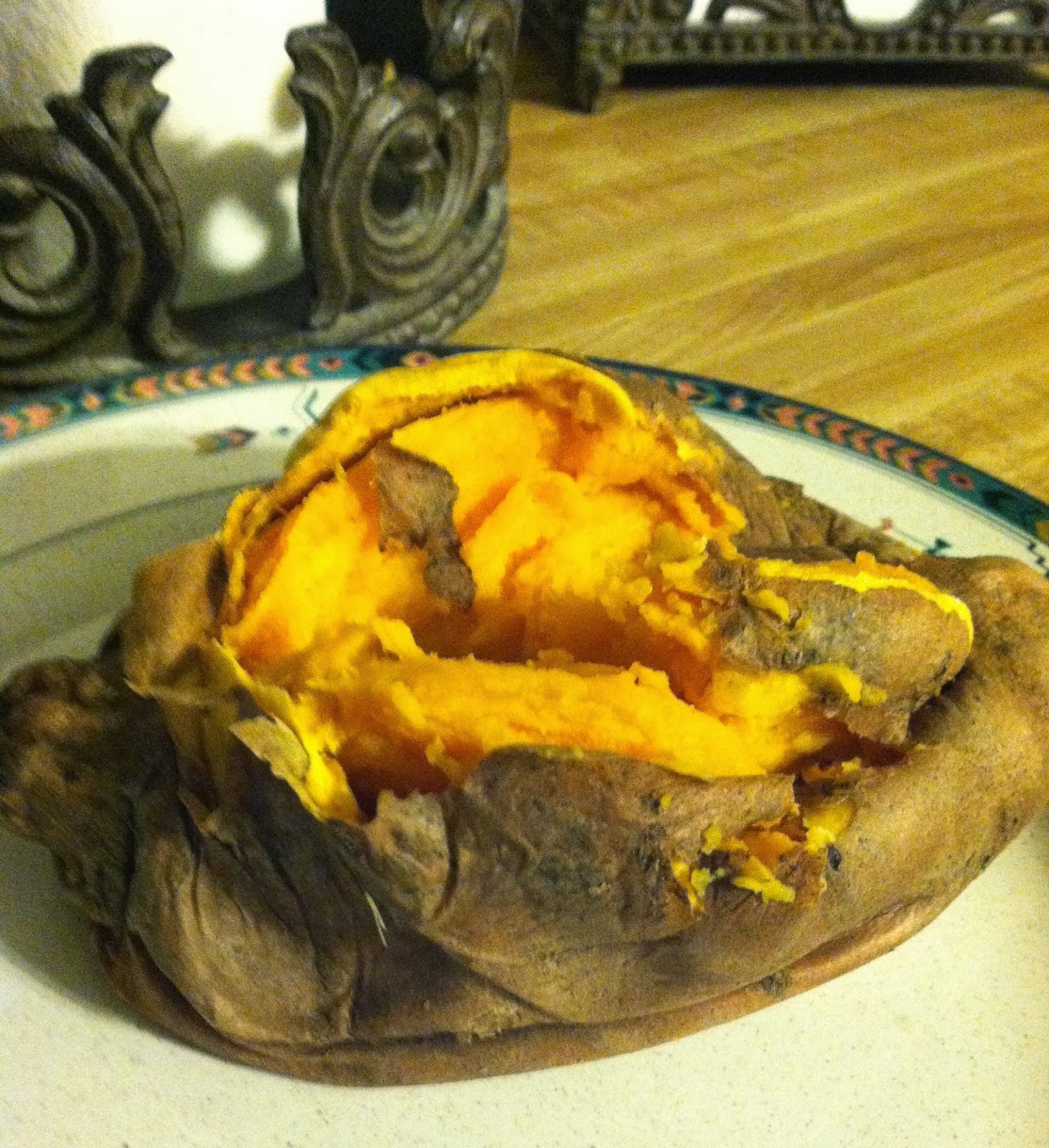Sweet potatoes, not to be confused with yams, are rich in carotenoid pigments-an antioxidant that converts to vitamin A. Sweet potatoes are higher in fiber than white potatoes, similar in potassium, and a good source of vitamin C, B6, calcium, magnesium, and manganese.
White potatoes are still a good source of fiber, have a higher amount of protein, and are a good source of potassium, vitamin A, vitamin C, B6, magnesium, iron, and folate.
Both potatoes have similar calories, fat, and glycemic index rating.
So why do potatoes have such a bad reputation?
Mostly because we eat too much and do not prepare them in healthy ways. Eating sweet potato fries has little to no benefit over eating regular French fries. Both are laden with oil and are stripped of the insoluble fiber found in the potato's skin. Loading potatoes with marshmallows, sugar, butter, sour cream, or bacon certainly doesn't contribute to a healthy meal either.
Keeping the potato as close to its natural state as possible, and eating 1 serving (about 1/2 cup) at a time will provide a healthy, low fat, nutrient rich vegetable to any meal. Potatoes are even helpful for people looking to lose weight. While higher in calories than nonstarchy vegetables, the insoluble fiber in the skin adds roughage to the diet, and the soluble fiber in the flesh of the potato slows digestion and provides satiety, helping you to feel full longer.
White and sweet and potatoes offer many health benefits. With the sweet potato coming up a bit stronger in nutrient content, white potatoes offer alternative nutrients the sweet potato does not. Eating a variety of sweet and white potatoes contributes to an overall healthy eating plan.
Health-full Cooking:
Pierce a clean sweet potato several times with a fork
Drizzle olive oil and place in a 400 degree oven for 45 minutes or until tender
Enjoy plain or sprinkled with cinnamon
Cut a clean white potato into cubes
Place on a baking sheet and drizzle with olive oil, pepper, garlic, and crushed rosemary
Bake at 400 degrees for 20-30 minutes or until tender

